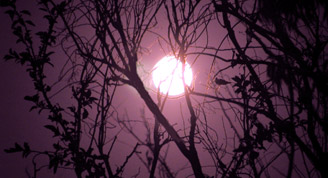Sreela Viswanath Chakravarty Thakur
As published in The Harmonist (Sree Sajjanatoshani)
Edited by Paramahamsa Paribrajakacharyya Sri Srimad Bhakti Siddhanta Saraswati Goswami Maharaj
DECEMBER 16, 1934
The Word of God is both the Object and the Agent of His Own manifestation. As the agent of His manifestation the Word makes His appearance in this world through the medium of the succession of the Divine Masters. Sreela Viswanath Chakravarty Thakur is sixth from Sree Chaitanya in the line of the Divine Teachers of Medium of the Appearance of the Word in this world.
The six Goswamins of Vrindavana form the contemporary group of the teachers of the Word at the time of Sree Chaitanya. In the next generation the Word was preached on an extensive scale by Sreenivas Acharyya, Thakur Narottama and Shyamananda Prabhu. Sreela Viswanath Chakravarty Thakur represents the third period of propaganda activity.
Sreela Viswanath's career may have extended from 1560 to 1630 Saka era. In 1601 Saka he completed his Sree Krishna-Bhavanamrita. He wrote the tika Sararthadarshini of Sreemad Bhagavatam in 1626 Saka. As he lived to a good age it would be reasonable to hold that he attained the age of seventy. Sreela Viswanath made his appearance in the district of Nadia in a Rarhiya Brahmana family. He might have borne also the name of Hari-ballabha. Ramabhadra and Raghunath were his elder brothers. Sreela Thakur Studied Vyakarana at Devagram. He then resided at Saidabad, in the district of Murshidabad, in his preceptor's household for studying Bhakti-Shastra. Sree Radharaman Chakravarty was his Guru. Sree Radharaman was the disciple of Sree Krishna-Charan, disciple of Sree Ganganarayan Chakravaerty, disciple of Sreela Narottama Thakur. Sreela Chakravarty Thakur wrote octet hymns of all these four masters. These Stotras are found in his Stavamrita Lahari. Sreela Chakravarty Thakur wrote numerous works during his residence in different places of Braja. His works have always been treasured among the invaluable heritage of the Gaudiya-Vaishnava community. Sreela Viswanath resided at Sree Govardhana,on the bank of Sree Radha-Kunda, at Sree Yavata and in the Gokulananda quarter of Sree Vrindavana. These places are mentioned at the close of different works written by him while residing at those places.
Sree Ganganarayan Chakravarty, disciple of Sreela Narottama Thakur was a resident of Baluchar Gambhila. Sree Ganganarayan Chakravarty had an only daughter, Vishnupriya. Sree Krishna-Charan, youngest son of Sree Ramakrishna Bhattacharya, disciple of Sreela Narottama Thakur, was the adopted son of Sree Ganganarayan Chakravarty. Sarvarthadarshini gives the following list of the preceptors of Chakravarty Thakur:-- Sree Gauranga, Sree Lokanath, Sree Narottama, Sree Ganganarayana, Sree Krishna-Charan, Sree Radharaman.
Sreela Chakravarty Thakur is also connected with two historic events in the annals of the Gaudiya-Vaishnava sampradaya. He opposed the views of Rupa Kaviraj and reputed Sree Baladeva Vidyabhusan and Sree Krishna-deva to Jaipur, Rajputna, for refuting the claims of the Ramanuja community to the worship of Sree Govindadeva at the temple of Galta in opposition to those of the Gaudiya-Vaishnavas. It will not be out of place to refer briefly to these events.
Sreela Hemalata Thakurani, daughter of Sree-Nivas Acharyya, expelled Sree Rupa Kaviraj, an ascetic disciple of her father, from the Gaudiya-Vaishnava sampradaya. Rupa Kaviraj enrolled himself in an unauthorised branch of the Gaudiya Vaishnava sampradaya, which obtained the designation 'Atibadi'. Rupa Kaviraj, in opposition to Gaudiya-Vaishnava sampradaya, preached the doctrine that only an ascetic is eligible for performing the function of the Acharyya and that no householder is entitled to be an Acharyya on the path of Bhakti. It was the purpose of Rupa Kaviraj to put a slight upon the path of regulation (Bidhi marga) and to ignore it altogether for establishing unchecked immorality as the path of loving devotion (Ragamarga). He also promulgated the view that it is possible to practise recollection (Smarana), etc. independently of sravana and kirtana, in direct opposition to the teaching of the six Goswamins. These views are refuted by Sreela Chakravarty Thakur in his Tika of the third Skandha of Sreemad Bhagavatam where he follows the views of Sreejiva in his Bhakti-sandarbha. But Sreela Chakravarty Thakur did not teach the wrong view that every hereditary descendant of an Acharyya is fit to be a teacher of the sanatana dharma and is to assume the title of Goswami as a hereditary distinction. As a matter of fact Sreela Chakravarty Thakur, although he was actually performing the function of the Acharyya, did not assume the title of Goswami.
In Saka 1628 the Raja of Jaipur (Rajputana) invited the Gaudiya teachers of Sree Vrindavana for refuting by public disputation the views of certain persons belonging to the sampradaya of Sreela Ramanuja. They objected to the worship of Sree Govindadeva in the temple at Galta being conducted by the Gaudiya-Vaishnavas. Sreela Chakravarty Thakur sent Sree Baladeva Vidyabhusan and his pupil Sree Krishnadeva to Jaipur for conducting the discussions. It was in connection with this controversy that Sree Baladeva Vidyabhusan wrote his Govindabhasya of the Vedanta embodying the Teaching of the Supreme Lord Sree Krishna-Chaitanya. Sree Baladeva Vidyabhusan was born in a non-Brahmin family. Sreela Viswanatha Chakravarty Thakur employed him as a preacher of the sampradaya of a time when the practice of hereditary Goswamiship was recognised in all the different Vaishnava sampradaya and the function of a teacher of religion was held to be the monopoly of the hereditary Brahmanas.
The following list gives the names of the books written by Sreela Viswanatha Chakravarty Thakur that we are have been able to trace:-
(1) Brajaritichintamani, (2) Shree Chamatkarachandrika, (3) Premasamputam (Khandakabyam), (4) Gitabali, (5) Subodhini (tika of Alankarakaustubha), (6) Anandachandrika (tika of Ujjvalanilamani), (7) Tika of Gopaltapani, (8) Stabamritalahari containing--(i) Sree Gurutatvastakam, (ii) Mantradatri Gurorastakam, (iii) Paramagurorastakam, (iv) Paratparagurorastakam, (v) Paramparatparagurorastakam, (vi) Shreelokanathastakam, (vii) Shreesachinandanastakam (viii) Swarupacharitamrita, (ix) Swapnavilasamritam, (x) Shreegopaladevastakam, (xi) Shreemadanmohanastakam, (xii) Shreegovindastakam, (xiii) Shreegopinathastakam, (xiv) Gokulanandastakam, (xv) Swayam Bhagavatastakam, (xvi) Shreeradhakundastakam, (xvii) Jaganmohanastakam, (xviii) Anuragaballi, (xix) Vrindadevyastakam, (xx) Shreeradhikadhyanamritam, (xxi) Shreerupachintamani,(xxii) Nandiswarastakam, (xxiii) Shreevrindavanastakam, (xxiv) Govardhanastakam, (xxv) Sankalpakalpadruma (satakam), (xxvi)Shreenikunjavirudavali (Virudkavya), (xxvii) Suratkathamrita (arjyastakam), (xxviii) Shreeshyamakundastakam,--- (9) Shreekrishnabhabanamritamahakavyam, (10) Shreebhagavatamritakana, (11) Ujjvalanilamaneh Kiranaleshah, (12) Shreebhaktirasamritasindhubinduh, (13) Ragabartmachandrika, (14) Aishvarjyakadambini, (15) Madhurjyakadambini, (16) Tika of Bhaktirasamritasindhu, (17) Tika of Shreeujjvalanilamani, (18) Tika of Danakelikaumudi (19) Tika of Shreelalitamadhava Nataka, (20) Tika of Shreebidagdhamadhava Nataka, (21) Tika of Shree Chaitanya Charitamrita (unfinished), (22) Tika of Brahmasamhita, (23) Sararthavarshini Tika of Shreemadbhagavatgeeta, (24) Sararthadarshini tika of Sreemad Bhagabatam.



